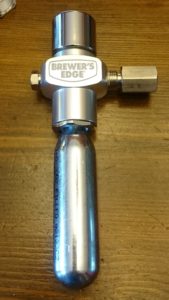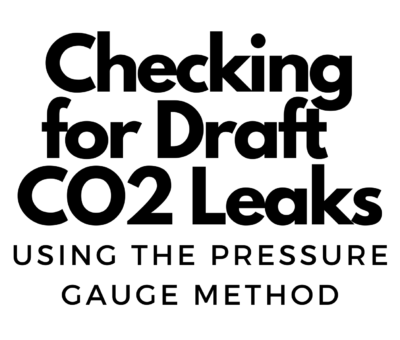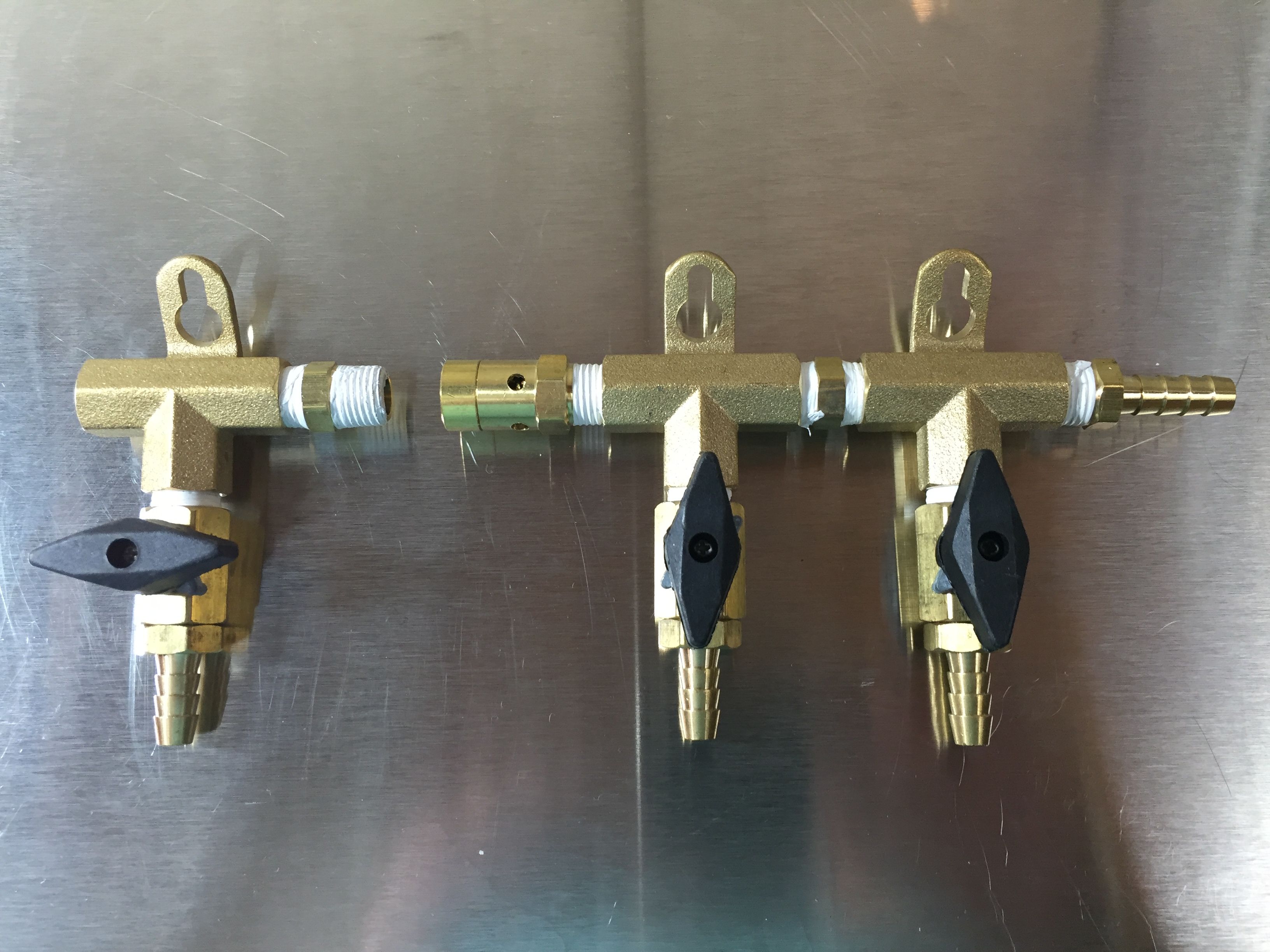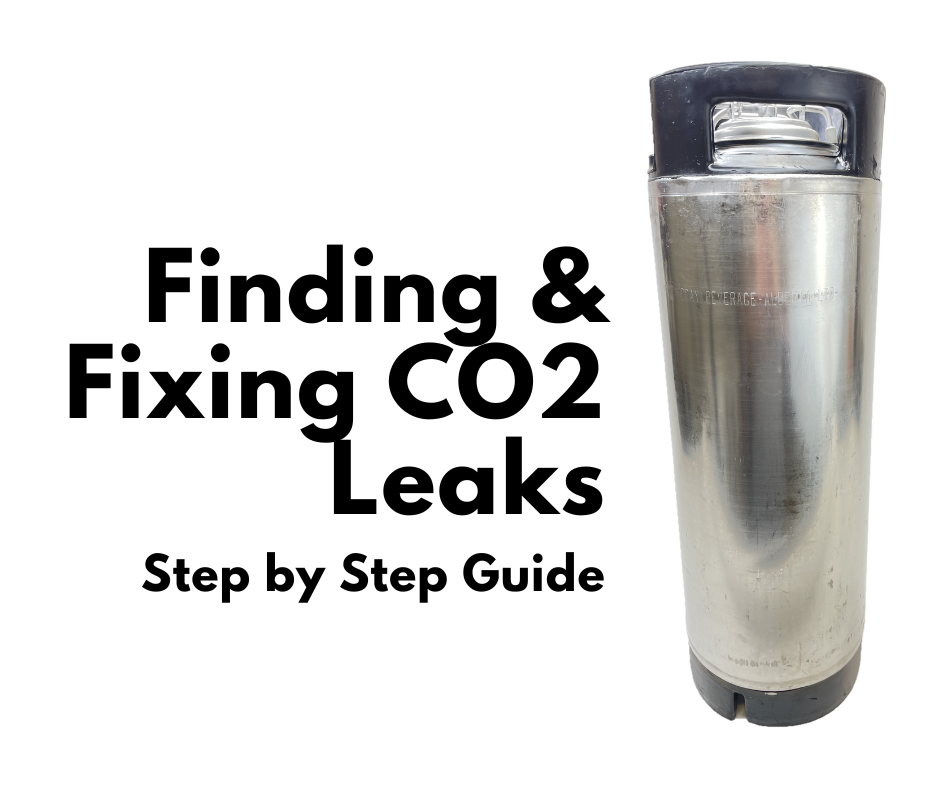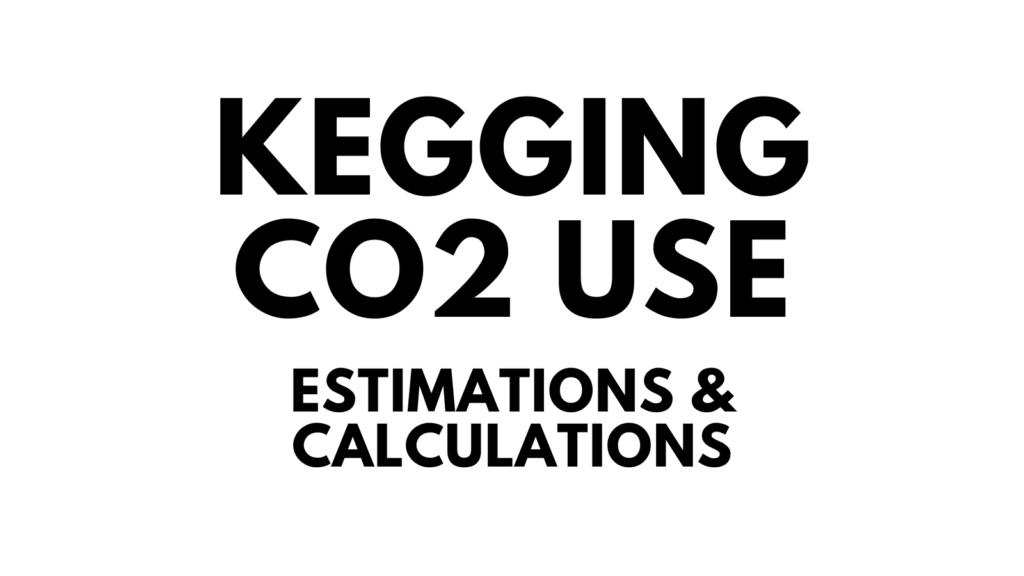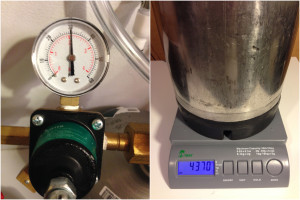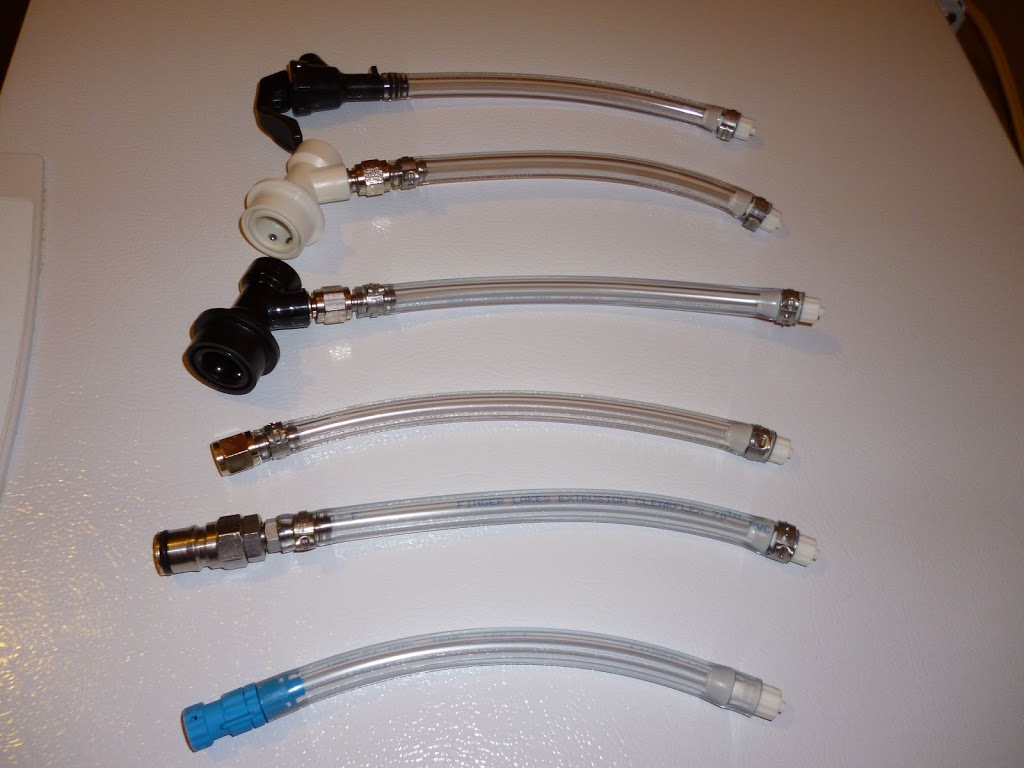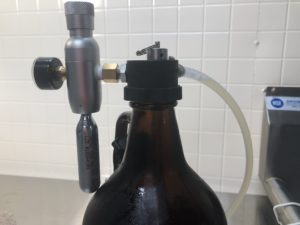
Pressurized CO2 Growler Dispenser Tap for Glass Beer Growlers by the Spotted Dog Company
This setup consists of a regulator, growler dispense cap, faucet with tubing and dip tube. It’s designed to fit standard glass growlers. This allows you to serve tap beer from a standard growler as you want to. Since it’s regulated, you can keep carbonation levels up and reduce oxidation. Note that a growler is not included and you need to buy CO2 cartridges separately.
Hands on Review: Spotted Dog CO2 Pressurized Growler Dispenser
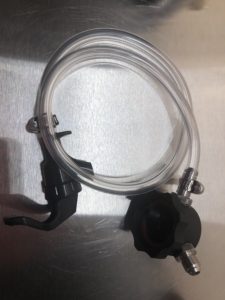 A look at the cap, faucet and tubing
A look at the cap, faucet and tubing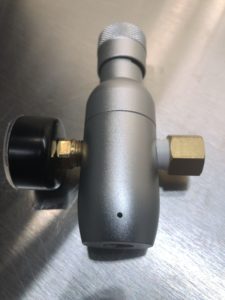 A look at the included mini CO2 regulator. Note that this is a regulator as opposed to an injector. Injectors give you no regulation of pressure other than the amount you choose to inject. This is an actual regulator that you can set to a desired pressure. That’s a key feature since this is intended to be used with compatible glass growlers.
A look at the included mini CO2 regulator. Note that this is a regulator as opposed to an injector. Injectors give you no regulation of pressure other than the amount you choose to inject. This is an actual regulator that you can set to a desired pressure. That’s a key feature since this is intended to be used with compatible glass growlers.
You can also use this with your homebrew keg… This regulator features a female flare connector (the brass piece on the right side of this photo). That means you can install it on a ball lock or pin lock MFL QD [Search MFL keg disconnect] and use it on a ball lock or pin lock homebrew keg. Whammo! A look at the faucet. A standard picnic/cobra style tap with a small length of tubing attached.
A look at the faucet. A standard picnic/cobra style tap with a small length of tubing attached.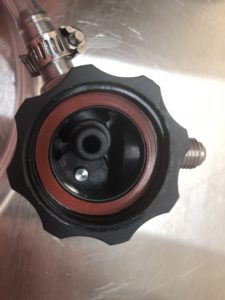 A look at the inside of the dispense cap. Notice the included o-ring/gasket. The cap feels sturdy and well built.
A look at the inside of the dispense cap. Notice the included o-ring/gasket. The cap feels sturdy and well built.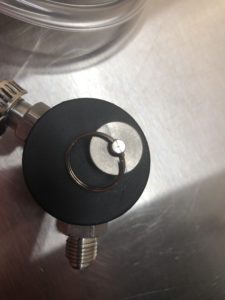 A look at the cap top-down. A PRV is installed on the top of the cap. That’s for venting to help adjust pressure or when you’re ready to remove the cap. The male flare at the bottom is for installation of the included regulator.
A look at the cap top-down. A PRV is installed on the top of the cap. That’s for venting to help adjust pressure or when you’re ready to remove the cap. The male flare at the bottom is for installation of the included regulator.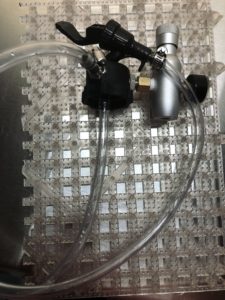 A look at the entire assembly after a soak in PBW. Note that I did not soak the regulator in PBW. That was installed after cleaning and rinsing the cap, faucet, tubing and dip tube.
A look at the entire assembly after a soak in PBW. Note that I did not soak the regulator in PBW. That was installed after cleaning and rinsing the cap, faucet, tubing and dip tube. Installed on a growler
Installed on a growler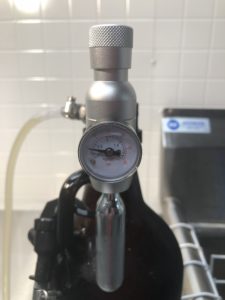 A look at the front of the CO2 pressurized growler dispenser
A look at the front of the CO2 pressurized growler dispenser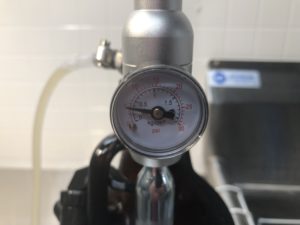 A close up of the regulator dial. The gauge on this regulator reads 30 PSI. Under no circumstances should this be set at 30 PSI. I keep it under 10 PSI. For serving I’ve found that just 1 or 2 PSI is sufficient. It’s important that you read and follow all manufacturer’s instructions for this unit. In the background: Gridmann Commercial Stainless Sink
A close up of the regulator dial. The gauge on this regulator reads 30 PSI. Under no circumstances should this be set at 30 PSI. I keep it under 10 PSI. For serving I’ve found that just 1 or 2 PSI is sufficient. It’s important that you read and follow all manufacturer’s instructions for this unit. In the background: Gridmann Commercial Stainless Sink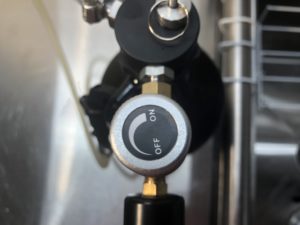 A top down look at the adjustment knob
A top down look at the adjustment knob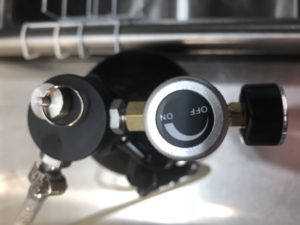 Top down look at the entire unit
Top down look at the entire unit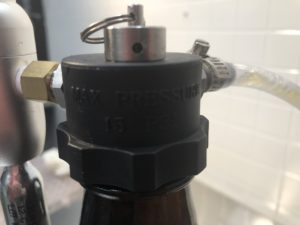 A side view look at the dispense cap. My cap says “Max Pressure 15 PSI”. I keep it under 10 PSI. For serving I’ve found that just 1 or 2 PSI is sufficient. It’s important that you read and follow all manufacturer’s instructions for this unit.
A side view look at the dispense cap. My cap says “Max Pressure 15 PSI”. I keep it under 10 PSI. For serving I’ve found that just 1 or 2 PSI is sufficient. It’s important that you read and follow all manufacturer’s instructions for this unit.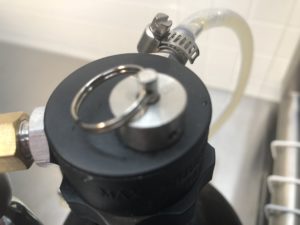 A look at the PRV valve
A look at the PRV valve
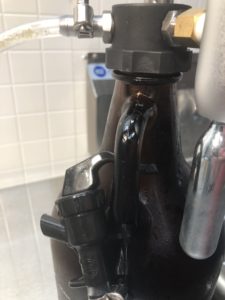 The picnic tap hangs nicely on the growler handle
The picnic tap hangs nicely on the growler handle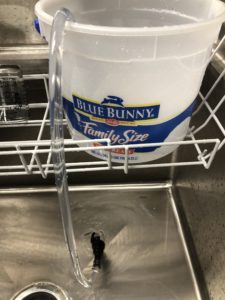 I found this easy to clean. After removing the regulator, I rinsed the entire assembly, making sure there was some water left in the faucet tubing to help start a siphon. Then I placed the unit in a tub of PBW and opened the faucet (below the unit and tub of PBW). That starts a nice flow of PBW that you can let run out. Of course, I did all of this in my Gridmann Commercial Stainless Sink. I consider a quality utility sink an essential piece of homebrew gear.
I found this easy to clean. After removing the regulator, I rinsed the entire assembly, making sure there was some water left in the faucet tubing to help start a siphon. Then I placed the unit in a tub of PBW and opened the faucet (below the unit and tub of PBW). That starts a nice flow of PBW that you can let run out. Of course, I did all of this in my Gridmann Commercial Stainless Sink. I consider a quality utility sink an essential piece of homebrew gear.
Compatibility
Beyond standard growlers this will work with other compatible growlers that use standard 38mm caps. Examples: The Prowler PET Growler and 128oz Stainless Steel Insulated Growler by Spotted Dog Company. It will also work with some gallon size jugs as long as they are pressure capable and use standard threads. For the larger gallon containers, you may need to swap out the dip tube tubing for a longer length.
Conclusions
The beauty of this setup is that it works on standard glass growlers. Many locales or breweries only fill their branded or specially marked growlers.
This does have some safety implications, it’s important that your growler is in good condition and capable of holding pressure. That’s always true whether you’re using this or not. Growlers hold pressurized beer and should be capable of doing so at proper pressures. Make sure to read and follow the directions that come from the manufacturer and set this to a safe PSI for your particular growler. The good news is, not much pressure is needed to serve beer. As I’ve already mentioned… you don’t need a lot of pressure to serve beer with this, just a 1 or 2 PSI.
This allows me to preserve beer, commercial or homebrew, using an easy to find standard growler so that I can drink it at my own pace. This is well built and converts a compatible growler into a featured packed mini keg that helps to preserve beer so you can drink it at your desired pace.
From the product description, check product page for current description, price and availability:
- PRESSURIZED growler dispensing has never been easier with the new Pressurized Growler Dispenser Tap. Fill up your favorite standard glass growler, attach the tap cap and regulator, use a single 12g CO2 cartridge and you’re ready to dispense!
- BREWERY FRESH beer every time you go for another pint. The CO2 mini regulator lets you dispense your favorite craft beer at it’s proper serving pressure like it is straight from the tap!
- PRESSURE RELIEF VALVE allows for easy oxygen purging to keep your beer fresh for weeks. Don’t settle for flat, tasteless growler beer ever again!
- UNIVERSAL fit with all standard 64oz and 128oz glass growlers with 38mm threaded caps. Save money over expensive pressurized growler systems by using your existing growler with the Growler Dispenser Tap!
- Don’t forget the cartridges! Cartridges are sold separately. We recommend 12g or 16g threaded food grade CO2 cartridges. Search Amazon for B07GNVKTS9 to find ours. A 12g cartridge will easily dispense 64oz of beer.
Get the Gear
Pressurized CO2 Growler Dispenser Tap for Glass Beer Growlers
The Weekend Brewer 6-Pack 12g 3/8″ Threaded Disposable CO2 Cartridges (6, 12g)
Related: Hands On: the Growler Saver Pressurized Growler Cap – note that GrowlerSaver is now defunct | Tips and Gear for Growler Filling
More Photos
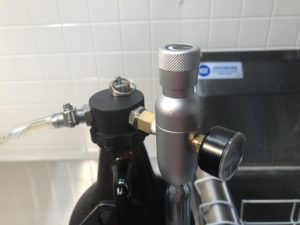
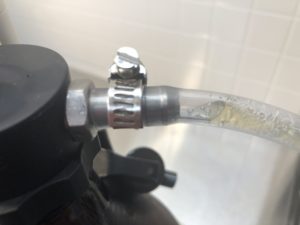
More Growler Reviews!
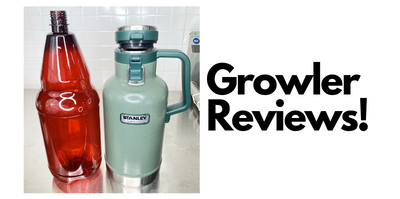
Convert Standard Growlers to Swing Top!
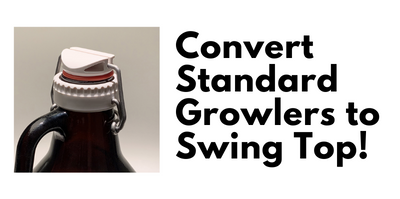
Growler Tips!
Growler Tips & Resources:
Also: Kegerator Tips & Gear | Keg Repair Part #s | Recent Keg Finds
Our Top Draft Resources!
Check our our Top Draft Related Resources
standarddraft
pinned
This post may contain affiliate links. We may make a commission when you use our links. This will never cost you extra. Thank you for supporting Homebrew Finds!
greatdeals
Make sure the components you use are compatible and rated for your intended application. Contact manufacturer with questions about suitability or a specific application. Always read and follow manufacturer directions. review:co2growler tag:tpr
Special thanks to Spotted Dog Company for providing the unit used for evaluation

 Pictured: CO2 Tank from Beverage Elements
Pictured: CO2 Tank from Beverage Elements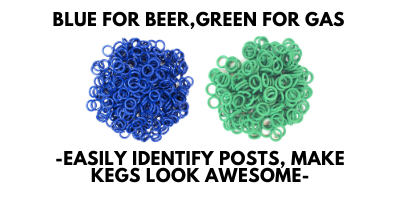

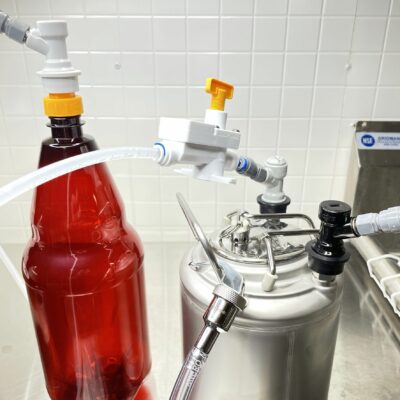
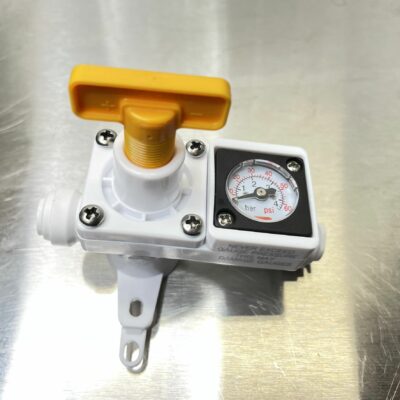
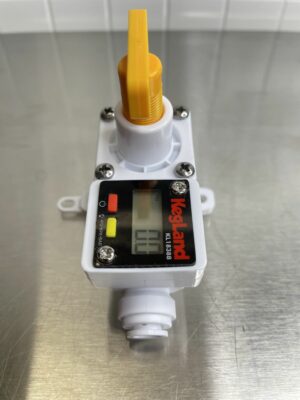
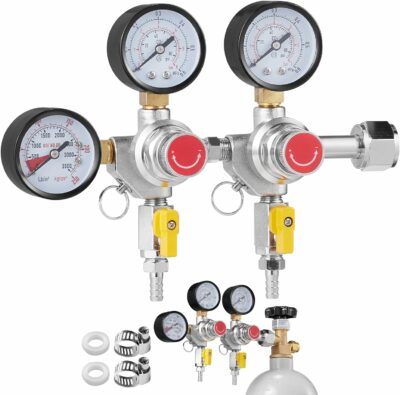
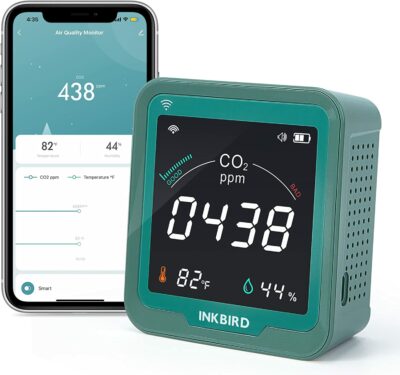
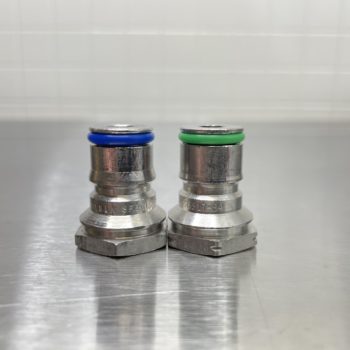
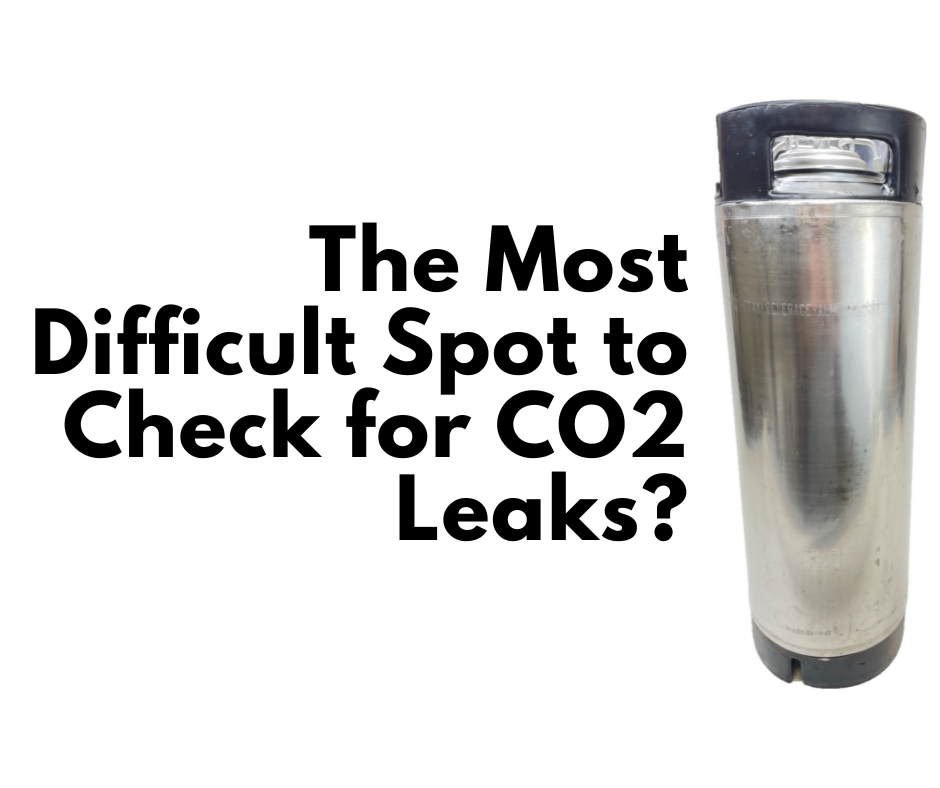
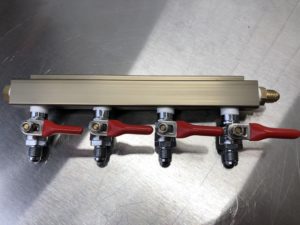
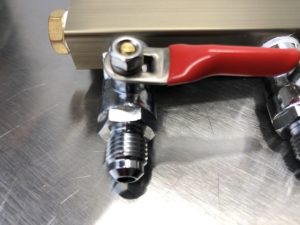 Close up of the ball valve. These feature inline check valves to help prevent back flow. I chose 1/4″ MFL but the weekend brewer has lots of options available, including a build your own option, linked below.
Close up of the ball valve. These feature inline check valves to help prevent back flow. I chose 1/4″ MFL but the weekend brewer has lots of options available, including a build your own option, linked below.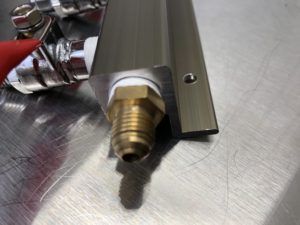 A look at the gas inlet. MFL “in” connections like this seem to be more difficult to come by. A barbed inlet seems to be more common.
A look at the gas inlet. MFL “in” connections like this seem to be more difficult to come by. A barbed inlet seems to be more common.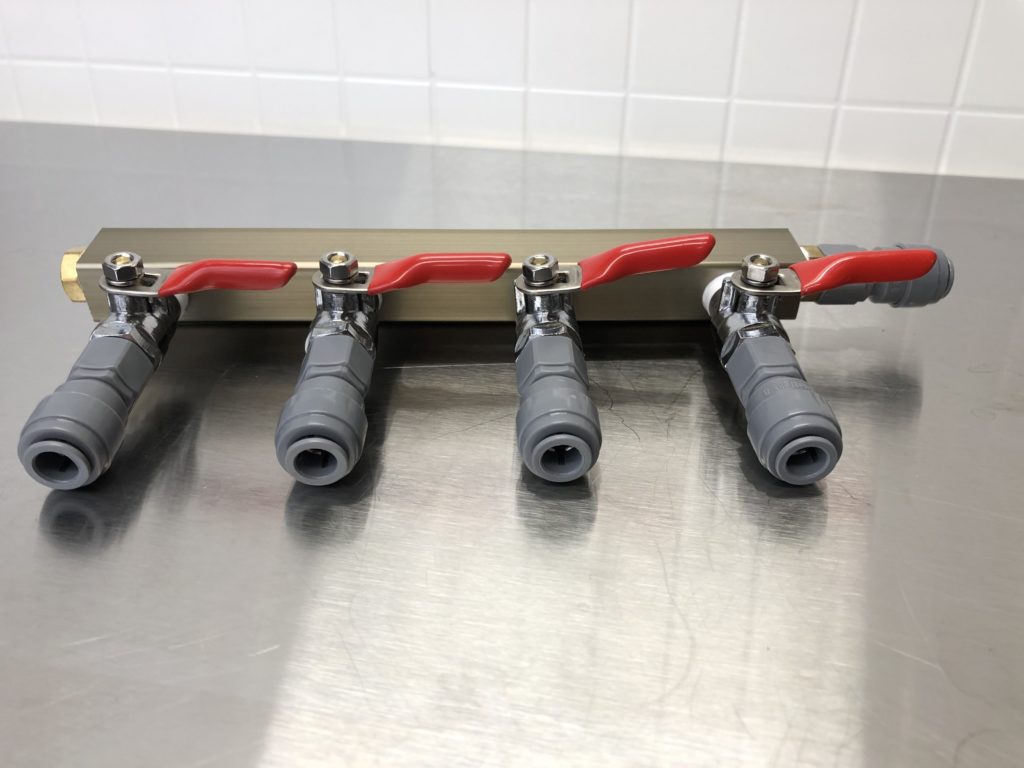


 A look at the cap, faucet and tubing
A look at the cap, faucet and tubing A look at the included mini CO2 regulator. Note that this is a regulator as opposed to an injector. Injectors give you no regulation of pressure other than the amount you choose to inject. This is an actual regulator that you can set to a desired pressure. That’s a key feature since this is intended to be used with compatible glass growlers.
A look at the included mini CO2 regulator. Note that this is a regulator as opposed to an injector. Injectors give you no regulation of pressure other than the amount you choose to inject. This is an actual regulator that you can set to a desired pressure. That’s a key feature since this is intended to be used with compatible glass growlers. A look at the faucet. A standard picnic/cobra style tap with a small length of tubing attached.
A look at the faucet. A standard picnic/cobra style tap with a small length of tubing attached. A look at the inside of the dispense cap. Notice the included o-ring/gasket. The cap feels sturdy and well built.
A look at the inside of the dispense cap. Notice the included o-ring/gasket. The cap feels sturdy and well built. A look at the cap top-down. A PRV is installed on the top of the cap. That’s for venting to help adjust pressure or when you’re ready to remove the cap. The male flare at the bottom is for installation of the included regulator.
A look at the cap top-down. A PRV is installed on the top of the cap. That’s for venting to help adjust pressure or when you’re ready to remove the cap. The male flare at the bottom is for installation of the included regulator. A look at the entire assembly after a soak in PBW. Note that I did not soak the regulator in PBW. That was installed after cleaning and rinsing the cap, faucet, tubing and dip tube.
A look at the entire assembly after a soak in PBW. Note that I did not soak the regulator in PBW. That was installed after cleaning and rinsing the cap, faucet, tubing and dip tube. A look at the front of the CO2 pressurized growler dispenser
A look at the front of the CO2 pressurized growler dispenser A close up of the regulator dial. The gauge on this regulator reads 30 PSI. Under no circumstances should this be set at 30 PSI. I keep it under 10 PSI. For serving I’ve found that just 1 or 2 PSI is sufficient. It’s important that you read and follow all manufacturer’s instructions for this unit. In the background:
A close up of the regulator dial. The gauge on this regulator reads 30 PSI. Under no circumstances should this be set at 30 PSI. I keep it under 10 PSI. For serving I’ve found that just 1 or 2 PSI is sufficient. It’s important that you read and follow all manufacturer’s instructions for this unit. In the background:  A top down look at the adjustment knob
A top down look at the adjustment knob Top down look at the entire unit
Top down look at the entire unit A side view look at the dispense cap. My cap says “Max Pressure 15 PSI”. I keep it under 10 PSI. For serving I’ve found that just 1 or 2 PSI is sufficient. It’s important that you read and follow all manufacturer’s instructions for this unit.
A side view look at the dispense cap. My cap says “Max Pressure 15 PSI”. I keep it under 10 PSI. For serving I’ve found that just 1 or 2 PSI is sufficient. It’s important that you read and follow all manufacturer’s instructions for this unit.
 The picnic tap hangs nicely on the growler handle
The picnic tap hangs nicely on the growler handle





